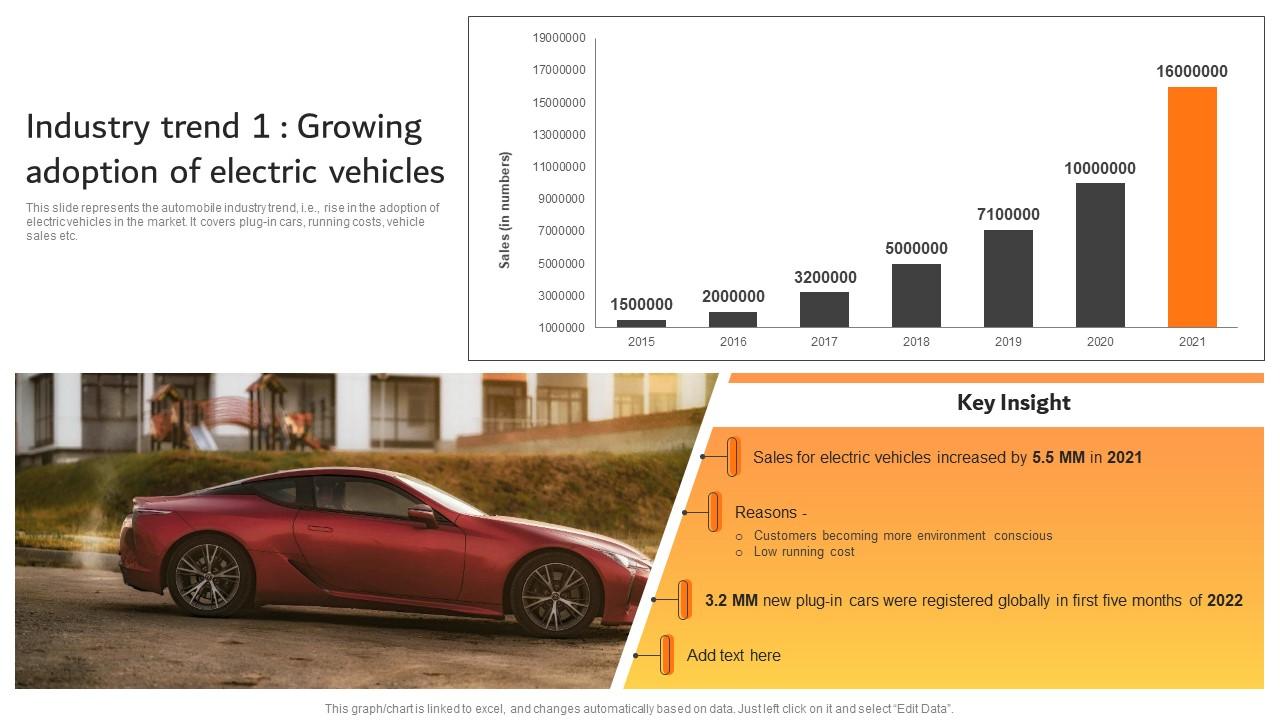The Car Industry's Growing Resistance To EV Sales Targets

Table of Contents
The global push for electric vehicles (EVs) is facing significant headwinds. Major car manufacturers are expressing increasing resistance to ambitious sales targets, creating a complex situation that threatens the timeline for widespread EV adoption. This resistance stems from a multifaceted interplay of factors, and understanding these challenges is crucial for navigating the path towards a sustainable transportation future. This article delves into the key reasons behind this growing reluctance.
<h2>High Production Costs and Supply Chain Challenges</h2>
The transition to electric vehicle manufacturing requires significant investment. Producing EVs is far more complex than producing internal combustion engine (ICE) vehicles, demanding substantial capital expenditure across various stages. This includes the development and implementation of advanced battery technology, the creation of robust charging infrastructure, and the establishment of specialized manufacturing processes.
- Increased raw material costs: The prices of essential raw materials like lithium, cobalt, and nickel, crucial components in EV batteries, have skyrocketed, significantly impacting production costs. This volatility in raw material prices makes long-term cost projections challenging for manufacturers.
- Global chip shortages: The ongoing global semiconductor chip shortage continues to disrupt production timelines for all types of vehicles, including EVs. This constraint hampers the ability of manufacturers to meet escalating demand and achieve their sales targets.
- Lack of skilled labor: The shift to EV manufacturing requires a skilled workforce proficient in new technologies and processes. A shortage of qualified engineers, technicians, and assembly line workers poses a significant challenge to scaling up EV production.
- High upfront capital expenditure: Building new EV-specific factories and upgrading existing infrastructure demands substantial upfront investment. This capital intensity can deter manufacturers from fully committing to aggressive EV production plans, especially in uncertain economic conditions.
Supply chain disruptions further exacerbate these challenges. Geopolitical instability, natural disasters, and logistical bottlenecks all contribute to delays and increased costs, making it difficult for manufacturers to consistently meet their ambitious EV sales targets.
<h2>Consumer Demand and Affordability Concerns</h2>
While consumer interest in EVs is growing, significant hurdles remain in translating that interest into widespread adoption. One major obstacle is the price disparity between EVs and gasoline-powered vehicles. The higher upfront cost of EVs remains a significant barrier for many potential buyers.
- Higher purchase prices: EVs typically command a higher price tag compared to comparable gasoline-powered cars, primarily due to the cost of batteries and other advanced technologies.
- Limited range anxiety: Concerns about the driving range of EVs and the availability of charging stations remain prevalent among consumers. This "range anxiety" discourages potential buyers who are uncertain about the practicality of EVs for their daily driving needs.
- Charging infrastructure availability: The lack of widespread and readily accessible charging infrastructure continues to be a major deterrent. Inconsistent charging speeds and limited availability in certain geographic areas add to consumer hesitancy.
- Lack of awareness about government incentives: Many governments offer incentives and rebates to encourage EV adoption, but awareness of these programs remains low among potential buyers. Improved communication about these incentives is crucial for boosting EV sales.
Addressing consumer concerns requires a multi-pronged approach involving improved affordability through technological advancements, expanded charging infrastructure, and enhanced consumer education on the benefits and practicality of EVs.
<h2>Government Regulations and Policy Uncertainty</h2>
Stringent government regulations aimed at reducing carbon emissions are driving the push for EV adoption, but inconsistencies and uncertainties in these regulations create challenges for manufacturers.
- Varying EV mandates and emission standards: Different countries have implemented varying EV mandates and emission standards, creating a fragmented regulatory landscape. This makes it challenging for manufacturers to develop and implement consistent global production strategies.
- Uncertainty about future government subsidies and tax credits: The unpredictability of government subsidies and tax credits for EVs creates uncertainty in investment planning. Manufacturers are hesitant to commit to large-scale EV production without clear long-term policy support.
- Concerns about potential changes in environmental regulations: The ever-evolving nature of environmental regulations adds another layer of uncertainty. Manufacturers need consistent and predictable regulatory frameworks to support their long-term investment decisions.
- The complexity of navigating diverse regulatory landscapes: The complexity of navigating diverse and often conflicting regulatory landscapes across different markets adds significant costs and challenges to the development and deployment of EVs.
Conflicting policy signals and the rapid evolution of regulations create hesitancy and impede the development of long-term EV production strategies. Clear, consistent, and predictable policy frameworks are essential to encouraging manufacturers to fully embrace the transition to EVs.
<h3>The Role of Internal Combustion Engine (ICE) Vehicle Profitability</h3>
The continued profitability of ICE vehicles plays a significant role in influencing manufacturers' investment decisions regarding EVs.
- High profit margins on established ICE vehicle models: Manufacturers often enjoy high profit margins on their established ICE vehicle models. This profitability makes them reluctant to shift resources towards potentially less profitable EV production in the short term.
- Reluctance to cannibalize existing profitable ICE vehicle sales: Aggressive investment in EVs may lead to cannibalizing sales of profitable ICE vehicles, creating internal competition and impacting overall revenue.
- The need for a smooth transition to avoid impacting existing revenue streams: Manufacturers need to carefully manage the transition to avoid disrupting their existing revenue streams and maintain financial stability during the shift to EV production.
Balancing short-term profits from ICE vehicles with long-term sustainability goals and the need for EV adoption remains a key challenge for the automotive industry. A careful and strategic transition is necessary to ensure both financial viability and environmental responsibility.
<h2>Conclusion</h2>
The car industry's resistance to aggressive EV sales targets is a multifaceted issue, arising from a combination of high production costs, consumer affordability concerns, and the complexities of navigating government regulations. The continued profitability of ICE vehicles further complicates the transition. Understanding these challenges is paramount to accelerating the shift towards sustainable transportation. To accelerate the shift towards sustainable transportation, governments and manufacturers must work collaboratively to address these multifaceted issues. This includes fostering a supportive environment for EV adoption through consistent policies, incentivizing consumer demand, and investing in the development of more efficient and affordable EV technologies. Only through a balanced and collaborative approach can we overcome the growing resistance to ambitious electric vehicle sales targets and ensure a successful future for electric vehicles.

Featured Posts
-
 Luca Haenni And Eurovision 2025 What Role Will He Play
May 19, 2025
Luca Haenni And Eurovision 2025 What Role Will He Play
May 19, 2025 -
 Des Ola Ta Epeisodia Toy Tampoy Sto Mega
May 19, 2025
Des Ola Ta Epeisodia Toy Tampoy Sto Mega
May 19, 2025 -
 Cooke Maroney And Jennifer Lawrence Couple Seen Together Following Second Child Reports
May 19, 2025
Cooke Maroney And Jennifer Lawrence Couple Seen Together Following Second Child Reports
May 19, 2025 -
 Pahalgam Terror Attack Arrested You Tuber Jyoti Malhotras Pre Attack Activities And Pakistan Connections
May 19, 2025
Pahalgam Terror Attack Arrested You Tuber Jyoti Malhotras Pre Attack Activities And Pakistan Connections
May 19, 2025 -
 Brockwell Park Use Restricted Campaigners Legal Win
May 19, 2025
Brockwell Park Use Restricted Campaigners Legal Win
May 19, 2025
